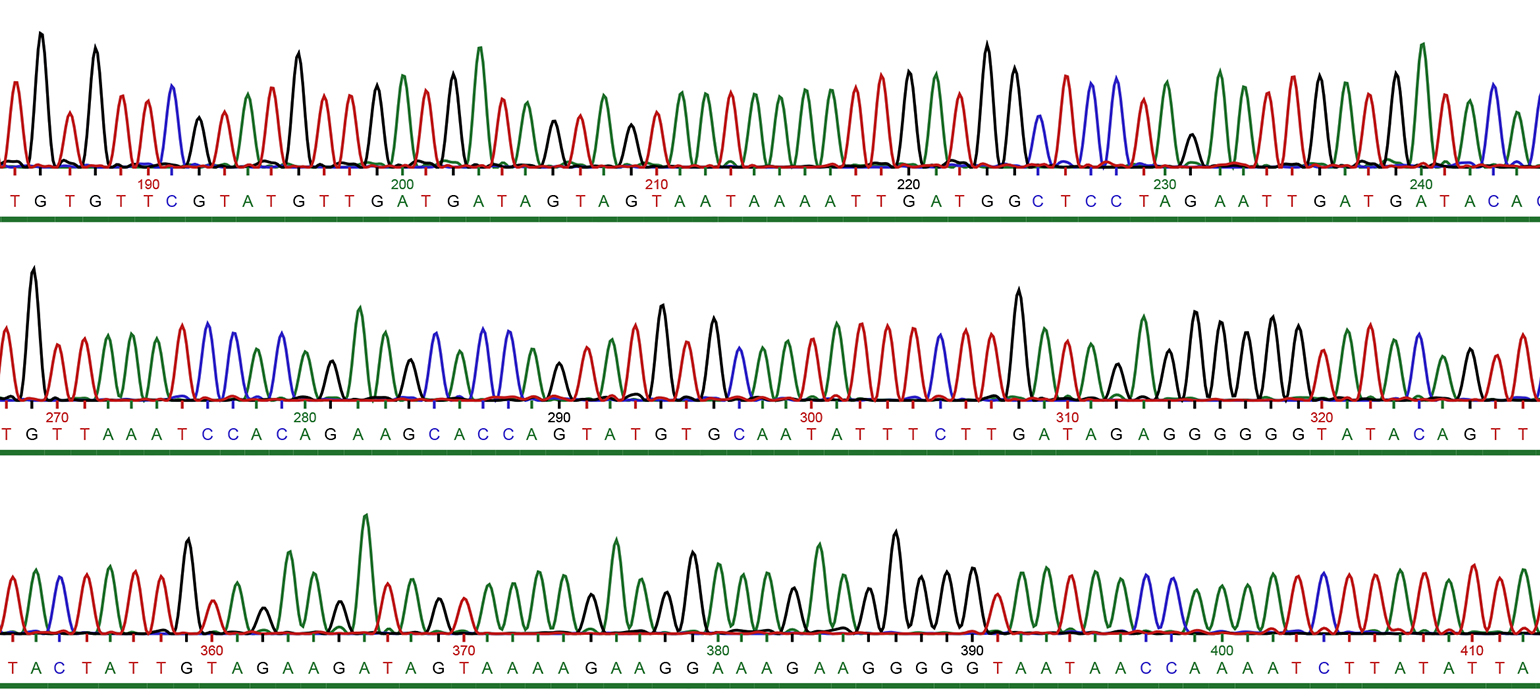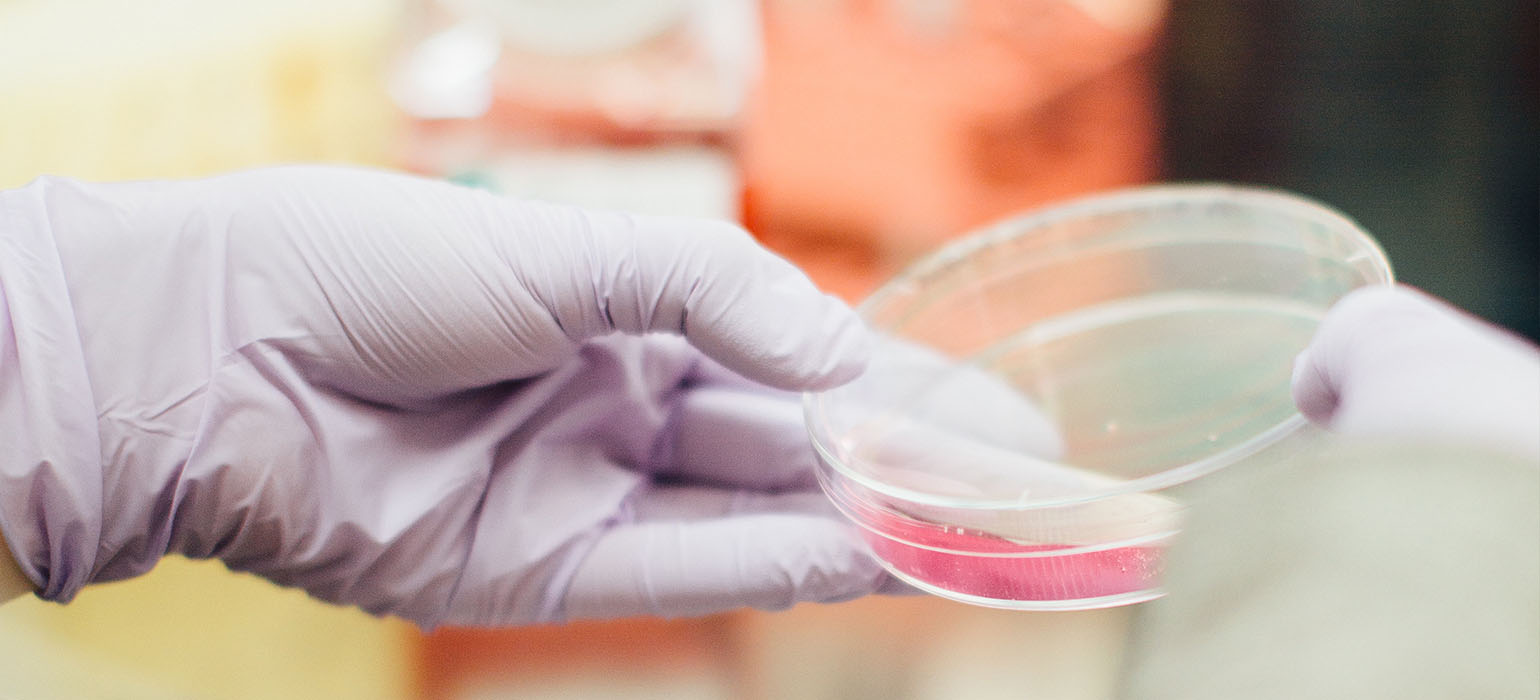Benefit from our experience and a wide range of methods.
- Clean room laboratory with automated DNA/RNA extraction
- Various PCR methods (celPCR, qPCR, digital PCR)
- High-throughput sequencing
- Bioinformatics and data analysis

Details - analytical methods
- DNA / RNA extraction
- Diagnostic PCR
- Quantitative PCR
- DNA barcoding
- Meta-barcoding
DNA / RNA extraction
Sinsoma offers a variety of extraction methods to obtain high quality DNA and RNA from a wide range of sample types.
All extractions are carried out in a clean room laboratory to exclude contamination and guarantee the highest quality.
Diagnostic PCR
Diagnostic PCR can be used to detect even the smallest amounts of DNA and RNA. Diagnostic PCR is based on the use of specific probes that only bind to DNA if DNA of exactly that type is present in the sample. Depending on the research question, we use either capillary electrophoresis PCR, quantitative PCR or droplet digital PCR to examine samples. All the diagnostic approaches we use are optimised in terms of their specificity and sensitivity.
Quantitative PCR
Sinsoma offers three different PCR methods for the quantification of DNA/RNA, which allows us to offer our customers the best solution for their question.
Droplet Digital™ PCR
This is a new, automated method of absolute DNA quantification. Compared to conventional methods such as qPCR, ddPCR™ has, among other benefits, the advantage that quantification is absolute and thus no standard curves are needed for comparison. It proves to be very robust and reliable, especially with small amounts of DNA, which are often found in environmental samples.
Quantitative PCR (qPCR)
This method, also known as real-time PCR (RT-PCR), is a procedure in which the quantification of DNA segments takes place in addition to the classic amplification. The increase in the number of DNA molecules obtained in the course of the reaction is recorded by means of fluorescence measurements. The DNA quantity is measured in the exponential phase, i.e. in that period of the PCR in which optimal reaction conditions prevail. The quantification is based on the alignment with internal controls.
Capillary electrophoresis PCR (celPCR)
The use of celPCR allows the DNA/RNA content of certain species to be determined by measuring the amount of the PCR product. This allows samples to be compared in terms of their relative DNA/RNA content.
DNA barcoding
Similar to scanning the barcode of products at a supermarket checkout, the determination of a species with this method is based on examining selected DNA sections. These so-called DNA barcodes are characteristic for a particular species. Comparing this code to a reference database allows us to identify the species. The DNA is usually extracted from a tissue sample, then the barcode DNA sequence is generated and compared to a large database. Analysis via DNA barcoding enablesrapid and reliable species identification of many animals, plants and fungi.

- Isolation of DNA from your sample.
- Duplication of a specific gene segment (DNA barcode) using general probes or probes exclusively developed by us.
- Processing and reading of the DNA sequence with subsequent comparison with reference databases for species identification.
DNA metabarcoding
By DNA metabarcoding ethe entire biodiversity of a sample can be recorded. For example, it can be used to identify the species spectrum from an environmental sample or the food spectrum of certain animal species from their faeces. DNA metabarcoding combines two technologies: high-throughput DNA sequencing using Next Generation Sequencing (NGS) platforms and species identification using DNA barcodes. The enormous amounts of data generated in the process require extensive bioinformatic analyses. For the detection of rare species, the application of this method is limited (here, diagnostic multiplex PCR is better suited), but for analysing biodiversity in a bulk sample, it is the ideal tool.

- Tissue from several species or a composite sample (e.g. faeces, stomach contents and the like) serves as starting material.
- Extract DNA from all organisms in the sample.
- A specific gene segment of the different organisms is amplified using general probes or probes exclusively developed by us.
- The DNA sequences are read separately for each species, analysed and compared with a reference database to identify the species composition in your sample.

